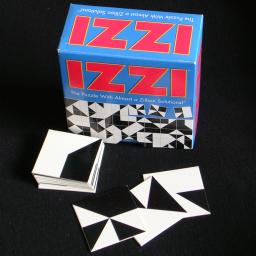


Izzi is a tiling puzzle consisting of 64 square cardboard tiles designed by Frank Nichols and made in 1992 by Binary Arts (now called ThinkFun). A square can be divided into 8 equal triangles by its diagonals and the horizontal and vertical mid-lines. There are 70 (see below) possible patterns created by colouring the triangles either black or white, and 64 of those patterns are used on the tiles in the Izzi puzzle. The six patterns not used are shown below.

The aim of the puzzle is to put the tiles in an 8×8 square, obviously while making sure that all the touching tile edges match in colour. The packaging shows one solution, reproduced below:
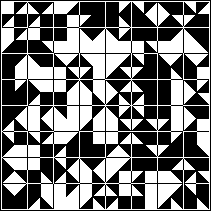
As there are very many solutions ("Zillions" apparently), extra conditions can be imposed such as a diagonal line across the large square as shown here:
| Diagonal |  |
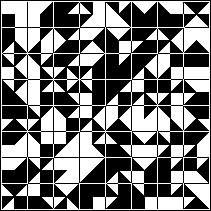 |
Other solvable patterns shown on the packaging are:
 |
 |
 |
| Diamond | X | Border |
In fact, it is possible to do the patterns above such that the left side of the large square matches the right side, and the top side the lower side. Six further patterns I have found solutions to (with matching sides) are:
 |
 |
 |
 |
 |
 |
| Diagonals | Diamond and diagonal | Diamond and border | Cross and border | Diagonals and border | Diamond, diagonal, and border |
Note that given one solution, others can be found by taking the mirror image, and/or exchanging white and black.
| Diamond |  |
 |
| X |  |
 |
| Border |  |
 |
| Diagonals |  |
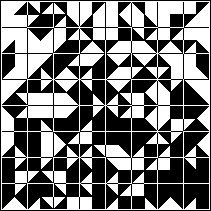 |
| Diamond and diagonal |  |
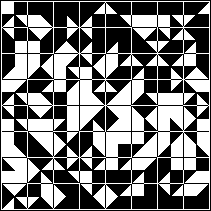 |
| Diamond and border |  |
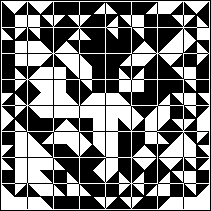 |
| Cross and border |  |
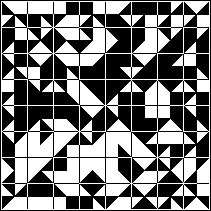 |
| Diagonals and border |  |
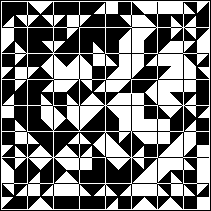 |
| Diamond, diagonal, and border |  |
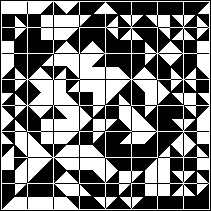 |
The solutions for the X and the Diamond patterns are related - one becomes the other by exchanging the left and right halves. Since the top and bottom edges also match, I could have exchanged the top and bottom halves instead for alternative solutions. The solution to the Diagonals pattern can be transformed in a similar way to give seven other Diagonals solutions.